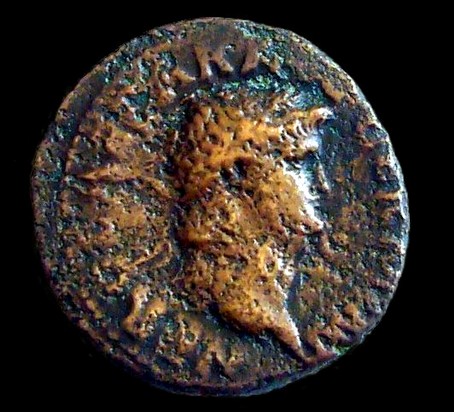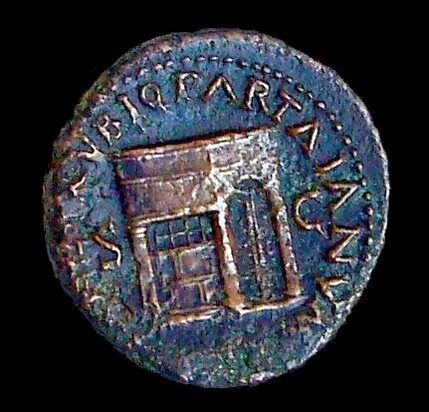

AE as AD 65, L. Domitius Ahenobarbus Nero Claudius Caesar AD 54 - 68 |
 |
 |
L. Domitius Ahenobarbus Nero Claudius Caesar, son of Agrippina the Younger, was adopted by Claudius in AD 50. Nero assumed power when Claudius died in AD 54. His reign was marked by major building projects, Eastern victories and a flourishing of the arts. Nero's elimination of Octavia in favour of Poppaea and his execution of imperial family members alienated the senate, while his persecution of the Christians and extravagance made him unpopular with the people. Major upheavals occurred from AD 67 on throughout the empire. When Galba was proclaimed emperor in Spain, Nero fled Rome and committed suicide in AD 68. Coin portraits of Nero depict him with broad features, a thick neck, a very ornate hairstyle with locks over his forehead resembling a crown and pronounced wavy hair on top of his head. His fleshy features evokes depictions of Helennistic rulers and relay royal luxury and wealth, thus departing from the iconography of his predecessors. Obv. Nero, laureate right, NERO CAESAR AVG. GERM. IMP.Rev. Temple of Janus with lattice window and a set of closed doors from which a garland is hung, [PACE P.R.] VBIQ. PARTA IANVM [CLVSIT S.C.] The coin commemorates the historical event of the closing of the doors of the temple of Janus in AD 65 for the first time since the reign of Augustus. As a symbol of universal peace on all frontiers the event marked the end of hostilities between Rome and Parthia. |
| Republican | Imperatorial | |
Greek Imperial | Byzantine |